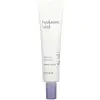What's inside
What's inside
 Key Ingredients
Key Ingredients

 Benefits
Benefits

 Concerns
Concerns

 Ingredients Side-by-side
Ingredients Side-by-side

Water
Skin ConditioningGlycerin
HumectantButylene Glycol
HumectantCoptis Japonica Root Extract
Skin ConditioningCyclopentasiloxane
EmollientDimethicone
EmollientPEG/PPG-18/4 Copolymer
SolventPEG-32
HumectantPortulaca Oleracea Extract
Skin ConditioningTriethanolamine
BufferingCarbomer
Emulsion StabilisingMalpighia Emarginata Fruit Extract
Skin ConditioningPEG-11 Methyl Ether Dimethicone
EmulsifyingPEG-40 Hydrogenated Castor Oil
EmulsifyingPPG-26-Buteth-26
Skin ConditioningVaccinium Angustifolium Fruit Extract
Skin ProtectingEthyl Hexanediol
SolventPolyacrylate-13
Polyisobutene
Glyceryl Caprylate
EmollientAcrylates/C10-30 Alkyl Acrylate Crosspolymer
Emulsion StabilisingPorphyra Yezoensis Extract
Skin ConditioningXanthan Gum
EmulsifyingParfum
MaskingPolysorbate 20
EmulsifyingSodium Hyaluronate
HumectantDisodium EDTA
Linalool
PerfumingButylphenyl Methylpropional
PerfumingHibiscus Sabdariffa Flower Extract
Skin ConditioningWater, Glycerin, Butylene Glycol, Coptis Japonica Root Extract, Cyclopentasiloxane, Dimethicone, PEG/PPG-18/4 Copolymer, PEG-32, Portulaca Oleracea Extract, Triethanolamine, Carbomer, Malpighia Emarginata Fruit Extract, PEG-11 Methyl Ether Dimethicone, PEG-40 Hydrogenated Castor Oil, PPG-26-Buteth-26, Vaccinium Angustifolium Fruit Extract, Ethyl Hexanediol, Polyacrylate-13, Polyisobutene, Glyceryl Caprylate, Acrylates/C10-30 Alkyl Acrylate Crosspolymer, Porphyra Yezoensis Extract, Xanthan Gum, Parfum, Polysorbate 20, Sodium Hyaluronate, Disodium EDTA, Linalool, Butylphenyl Methylpropional, Hibiscus Sabdariffa Flower Extract
Water
Skin ConditioningButylene Glycol
HumectantButylene Glycol Dicaprylate/Dicaprate
EmollientDimethicone
EmollientPEG-20 Methyl Glucose Sesquistearate
EmulsifyingBehenyl Alcohol
EmollientBetaine
HumectantCetyl Alcohol
EmollientGlycereth-26
HumectantGlyceryl Stearate
EmollientPEG-4 Olivate
EmulsifyingParaffin
PerfumingNeopentyl Glycol Diheptanoate
Emollient1,2-Hexanediol
Skin ConditioningTocopheryl Acetate
AntioxidantPolyacrylamide
Caprylyl Glycol
EmollientEthylhexylglycerin
Skin ConditioningHydrolyzed Collagen
EmollientParfum
MaskingPolysilicone-11
PEG-100 Stearate
C13-14 Isoparaffin
EmollientHydrogenated Lecithin
EmulsifyingPanthenol
Skin ConditioningPropylene Glycol
HumectantLaminaria Japonica Extract
Skin ProtectingLaureth-7
EmulsifyingCeramide NP
Skin ConditioningHydrolyzed Malt Extract
Skin ConditioningBenzyl Salicylate
PerfumingBHT
AntioxidantSaussurea Involucrata Extract
HumectantAlpha-Isomethyl Ionone
PerfumingLinalool
PerfumingDisodium EDTA
Hexyl Cinnamal
PerfumingHydroxycitronellal
PerfumingCitronellol
PerfumingArctostaphylos Uva-Ursi Leaf Extract
Skin ConditioningEthyl Hexanediol
SolventGeraniol
PerfumingPhenoxyethanol
PreservativeWater, Butylene Glycol, Butylene Glycol Dicaprylate/Dicaprate, Dimethicone, PEG-20 Methyl Glucose Sesquistearate, Behenyl Alcohol, Betaine, Cetyl Alcohol, Glycereth-26, Glyceryl Stearate, PEG-4 Olivate, Paraffin, Neopentyl Glycol Diheptanoate, 1,2-Hexanediol, Tocopheryl Acetate, Polyacrylamide, Caprylyl Glycol, Ethylhexylglycerin, Hydrolyzed Collagen, Parfum, Polysilicone-11, PEG-100 Stearate, C13-14 Isoparaffin, Hydrogenated Lecithin, Panthenol, Propylene Glycol, Laminaria Japonica Extract, Laureth-7, Ceramide NP, Hydrolyzed Malt Extract, Benzyl Salicylate, BHT, Saussurea Involucrata Extract, Alpha-Isomethyl Ionone, Linalool, Disodium EDTA, Hexyl Cinnamal, Hydroxycitronellal, Citronellol, Arctostaphylos Uva-Ursi Leaf Extract, Ethyl Hexanediol, Geraniol, Phenoxyethanol
Ingredients Explained
These ingredients are found in both products.
Ingredients higher up in an ingredient list are typically present in a larger amount.
Butylene Glycol (or BG) is used within cosmetic products for a few different reasons:
Overall, Butylene Glycol is a safe and well-rounded ingredient that works well with other ingredients.
Though this ingredient works well with most skin types, some people with sensitive skin may experience a reaction such as allergic rashes, closed comedones, or itchiness.
Learn more about Butylene GlycolDimethicone is a type of synthetic silicone created from natural materials such as quartz.
What it does:
Dimethicone comes in different viscosities:
Depending on the viscosity, dimethicone has different properties.
Ingredients lists don't always show which type is used, so we recommend reaching out to the brand if you have questions about the viscosity.
This ingredient is unlikely to cause irritation because it does not get absorbed into skin. However, people with silicone allergies should be careful about using this ingredient.
Note: Dimethicone may contribute to pilling. This is because it is not oil or water soluble, so pilling may occur when layered with products. When mixed with heavy oils in a formula, the outcome is also quite greasy.
Learn more about DimethiconeDisodium EDTA plays a role in making products more stable by aiding other preservatives.
It is a chelating agent, meaning it neutralizes metal ions that may be found in a product.
Disodium EDTA is a salt of edetic acid and is found to be safe in cosmetic ingredients.
Learn more about Disodium EDTAEthyl Hexanediol is an aliphatic alcohol. It is a solvent.
Solvents are used to keep ingredients together in a product. They can help dissolve ingredients to stable bases or help evenly distribute ingredients throughout the product.
Linalool is a fragrance and helps add scent to products. It's derived from common plants such as cinnamon, mint, citrus, and lavender.
Like Limonene, this ingredient oxidizes when exposed to air. Oxidized linalool can cause allergies and skin sensitivity.
This ingredient has a scent that is floral, spicy tropical, and citrus-like.
Learn more about LinaloolParfum is a catch-all term for an ingredient or more that is used to give a scent to products.
Also called "fragrance", this ingredient can be a blend of hundreds of chemicals or plant oils. This means every product with "fragrance" or "parfum" in the ingredients list is a different mixture.
For instance, Habanolide is a proprietary trade name for a specific aroma chemical. When used as a fragrance ingredient in cosmetics, most aroma chemicals fall under the broad labeling category of “FRAGRANCE” or “PARFUM” according to EU and US regulations.
The term 'parfum' or 'fragrance' is not regulated in many countries. In many cases, it is up to the brand to define this term.
For instance, many brands choose to label themselves as "fragrance-free" because they are not using synthetic fragrances. However, their products may still contain ingredients such as essential oils that are considered a fragrance by INCI standards.
One example is Calendula flower extract. Calendula is an essential oil that still imparts a scent or 'fragrance'.
Depending on the blend, the ingredients in the mixture can cause allergies and sensitivities on the skin. Some ingredients that are known EU allergens include linalool and citronellol.
Parfum can also be used to mask or cover an unpleasant scent.
The bottom line is: not all fragrances/parfum/ingredients are created equally. If you are worried about fragrances, we recommend taking a closer look at an ingredient. And of course, we always recommend speaking with a professional.
Learn more about ParfumWater. It's the most common cosmetic ingredient of all. You'll usually see it at the top of ingredient lists, meaning that it makes up the largest part of the product.
So why is it so popular? Water most often acts as a solvent - this means that it helps dissolve other ingredients into the formulation.
You'll also recognize water as that liquid we all need to stay alive. If you see this, drink a glass of water. Stay hydrated!
Learn more about Water